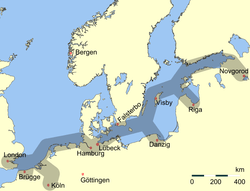Rostock
| Rostock | ||||||
|---|---|---|---|---|---|---|
From top: Skyline of Rostock with St. Mary's Church, St. Peter's Church, Rostock, Fishermen houses in the oldtown of Warnemünde., View over seaside resort Warnemünde | ||||||
| ||||||
 Rostock | ||||||
Administrative divisions of Rostock  | ||||||
| Coordinates: 54°5′0″N 12°8′0″E / 54.08333°N 12.13333°ECoordinates: 54°5′0″N 12°8′0″E / 54.08333°N 12.13333°E | ||||||
| Country | Germany | |||||
| State | Mecklenburg-Vorpommern | |||||
| District | Urban district | |||||
| Government | ||||||
| • Lord Mayor | Roland Methling (Ind.) | |||||
| Area | ||||||
| • Total | 181.44 km2 (70.05 sq mi) | |||||
| Population (2015-12-31)[1] | ||||||
| • Total | 206,011 | |||||
| • Density | 1,100/km2 (2,900/sq mi) | |||||
| Time zone | CET/CEST (UTC+1/+2) | |||||
| Postal codes | 18001–18147 | |||||
| Dialling codes | 0381 | |||||
| Vehicle registration | HRO | |||||
| Website | www.rostock.de | |||||
Rostock (German pronunciation: [ˈʁɔstɔk]) is the largest city in the north German state Mecklenburg-Vorpommern. Rostock is on the Warnow river; the district of Warnemünde 12 kilometres (7 miles) north of the city centre is directly on the Baltic Sea coast.
Rostock is home to one of the oldest universities in the world, the University of Rostock, founded in 1419.
The city territory of Rostock stretches for about 20 km (12 mi) along the Warnow to the Baltic Sea. The largest built-up area of Rostock is on the western side of the river. The eastern part of its territory is dominated by industrial estates and the forested Rostock Heath. Rostock is considered as the only regiopolis in Mecklenburg-Vorpommern.
History
Early history
In the 11th century Polabian Slavs founded a settlement at the Warnow river called Roztoc (*ras-tokŭ, Slavic for "fork of a river"); the name Rostock is derived from that designation.
The Danish king Valdemar I set the town aflame in 1161. Afterwards the place was settled by German traders. Initially there were three separate cities:
- Altstadt (Old Town) around the Alter Markt (Old Market) with St. Petri (St. Peter's Church),
- Mittelstadt (Middle Town) around the Neuer Markt (New Market) with St. Marien (St. Mary's Church) and
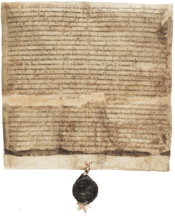
- Neustadt (New Town) around the Hopfenmarkt (Hop Market, now University Square) with St. Jakobi (St. James's Church, now demolished).
In 1218, Rostock was granted Lübeck law city rights by Heinrich Borwin, prince of Mecklenburg.
Hanseatic League

During the first partition of Mecklenburg following the death of Henry Borwin II of Mecklenburg in 1226, Rostock became the seat of the Lordship of Rostock, which survived for almost a century. In 1251, the city became a member of the Hanseatic League. In the 14th century it was a powerful seaport town with 12,000 inhabitants and the biggest city of Mecklenburg. Ships for cruising the Baltic Sea were constructed in Rostock. The formerly independent fishing village of Warnemünde at the Baltic Sea became a part of Rostock in 1323, to secure the city's access to the Baltic Sea.
In 1419, one of the earliest universities in Europe, the University of Rostock, was founded.
15th to 18th century


At the end of the 15th century the dukes of Mecklenburg succeeded in enforcing their rule over the town of Rostock, which had until then been only nominally subject to their rule and essentially independent. They took advantage of a riot known as Domfehde, a failed uprising of the impoverished population. Subsequent quarrels with the dukes and persistent plundering led ultimately to a loss of economic and political power.

In 1565 there were further clashes with Schwerin that which had far-reaching consequences. Among other things, was the introduction of a beer excise that favoured the dukes. John Albert I advanced on the city with 500 horsemen, after Rostock had refused to take the formal oath of allegiance, and had the city wall slighted in order to have a fortress built. Not until the first Rostock Inheritance Agreement of 21 September 1573, in which the state princes were guaranteed hereditary rule over the city for centuries, binding Rostock for a long time, and recognizing them as the supreme judicial authority, was the conflict ended. The citizens slighted the fortress the following spring. From 1575 to 1577 the city walls were rebuilt, as was the Lagebusch tower and the Stein Gate in the Dutch Renaissance style. The inscription sit intra te concordia et publica felicitas, which can still be read on the gate, refers directly to the conflict with the Duke. In 1584 it finally came to the Second Rostock Inheritance Agreement, which resulted in a further loss of former tax privileges. At the same time, these inheritance contracts put paid to Rostock's ambition of achieving imperial immediacy as Lübeck had done in 1226.
The strategic location of Rostock provoked the envy of its rivals. Danes and Swedes occupied the city twice, first during the Thirty Years' War (1618–48) and again from 1700 to 1721. Later, the French, under Napoleon, occupied the town for about a decade until 1813. In nearby Lübeck-Ratekau, Gebhard Leberecht von Blücher, who was born in Rostock and who was one of few generals to fight on after defeat at the Battle of Jena, surrendered to the French in 1806. This was only after furious street fighting in the Battle of Lübeck, in which he led some of the cavalry charges himself. By the time of the surrender, the exhausted Prussians had neither food nor ammunition.
19th century

In the first half of the 19th century Rostock regained much of its economic importance, due at first to the wheat trade, then, from the 1850s, to industry, especially to its shipyards. The first propeller-driven steamers in Germany were constructed here.
The city grew in area and population, with new quarters emerging in the south and west of the ancient borders of the city. Two notable developments were added to house the increasing population at around 1900:
- Steintor-Vorstadt in the south, stretching from the old city wall to the facilities of the new Lloydbahnhof (Lloyd Railway Station, now Rostock Hauptbahnhof), was designed as a living quarter and consisted mostly of large single houses, once inhabited by wealthy citizens.
- Kröpeliner-Tor-Vorstadt in the west, was designed to house the working population as well as to provide smaller and larger industrial facilities, such as the Mahn & Ohlerich's Brewery (now Hanseatische Brauerei Rostock). The main shipyard, Neptun, was nearby at the shore of the river.
20th century
In the 20th century, important aircraft manufacturing facilities were situated in the city, such as the Arado Flugzeugwerke in Warnemünde and the Heinkel Works with facilities at various places, including their secondary Heinkel-Süd facility in Schwechat, Austria — the original Heinkel firm's Rostock facilities being named Heinkel-Nord. It was at their facilities in Rostock-Marienehe (today's Rostock-Schmarl, along the west bank of the Unterwarnow estuary) that the world's first airworthy jet plane prototype made its test flights.
In the early 1930s, the Nazi Party began to gain among Rostock's voters, many of whom had suffered economic hardship during the 1920s. In elections in the summer 1932, when the Nazis achieved their greatest national showing in a free election of 37.3 percent, they polled 40.3 percent in Rostock. A year later, after the Nazi seizure of power and the suppression of other political parties, the Rostock city council (Stadtrat) was composed entirely of Nazis. In the so-called "Crystal Night" Kristallnacht of Nov. 10, 1938, the Jewish synagogue in Rostock's Augustenstrsse was destroyed by arson and dozens of Jews were beaten and imprisoned.
Feverish rearmament by the Nazi regime boosted Rostock's industrial importance in the late 1930s, and employment soared at the Heinkel and Arado factories and at the Neptunwerft shipyard. The city's population grew from 100,000 in 1935 to 121,192 in 1939.
During World War II, Rostock was subjected to repeated and increasingly heavy bombing attacks, especially by the British Royal Air Force. Targets included the Heinkel and Arado plants and the shipyard, but churches and other historic structures in the city center also were heavily damaged, among them the 14th century Nikolaikirche (St. Nicholas Church) and Jakobikirche (St. Jacob's Church). The ruins of the latter were torn down in 1960.
After the war, the city—now in the German Democratic Republic—became East Germany's largest seaport, and the now state-owned shipyards in the district of Warnemünde were expanded. Its population, boosted in part by resettled refugees from former German territories in the east, increased in the GDR years to a peak of 260,000. Following the reunification of Germany in 1990, Rostock lost its privileged position as the No. 1 port of the GDR, and the city's population declined to about 200,000. However, after 2006, the population increased again. Today, Rostock and Warnemünde are significant tourist destinations on the Baltic Sea.
The Rostock-Lichtenhagen_riots occurred from August 22 to August 24, 1992 when violent xenophobic riots took place in the Lichtenhagen district of Rostock, Germany; these were the worst mob attacks against migrants in postwar Germany. Even though stones and petrol bombs were thrown at an apartment block where asylum seekers lived, no one was killed. At the height of the riots, several hundred militant right-wing extremists were involved, and about 3,000 neighbourhood onlookers stood by, applauding them.
-

Depiction of Rostock in 1845
-

Rostock bomb damage, 1942
-

City Hall, Market Square after war
-
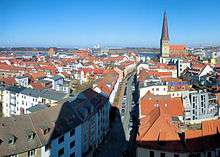
Rostock in 2011
-

The 16th century Steintor city gate
-

St. Mary's Church (Marienkirche), 2011
Politics
Districts

Symbols

Rostock has had three different coats of arms, known as the Signum, the Secretum and the Sigillum. The Signum, which can be traced back to 1367, was developed last and is to this day the coat of arms of the city.
The Signum depicts a golden griffin on a blue background, with bars of silver and red, the colours of the Hanseatic League, below. It can be seen not only on flags and houses, and at bus stops, but also on bridges, gullies, fences, ships and restaurants.
Administration
Since the 13th century, the governing body of the city has been the city council (Rat), first consisting of ten, later of 24 aldermen (Ratsherren). The chairman of the city council was the city mayor. In the 19th century there were even three mayors. Since 1925, the head of the city has borne the title of Lord Mayor. Having been elected for centuries by the city council, he is now elected directly by the citizens of Rostock, following a reform in 2002.
The city parliament (Bürgerschaft) represents the citizens. Representative are elected for five years. The number of representatives is currently 53.
The city parliament is presided by the Präsident der Bürgerschaft. He heads and prepares the sessions and, together with the Lord Mayor, represents the city.
Roland Methling (Independent), was elected Lord Mayor of Rostock in the first round by 58.2% of the voters on 27 February 2005.
Partner cities
Rostock has signed partnership agreements with the following cities:[2]
- Szczecin, Poland, 1957[3]
- Turku, Finland, 1959
- Dunkirk, France, 9 April 2000[4]
- Riga, Latvia, 1961[5]
- Antwerp, Belgium, 1963
- Århus, Denmark, 1964
- Bergen, Norway, 1965
- Gothenburg, Sweden, 1965
- Varna, Bulgaria, 1966
- Rijeka, Croatia, 1966
- Bremen, Germany, 1987[6]
- Dalian, People's Republic of China, 1988
- Raleigh, North Carolina, United States, 2001
- Guldborgsund, Denmark, 2014[7]
Rostock is a member of the international network New Hanse.

Regiopolis Rostock
Rostock is the first city region that defines itself not only as a city in its boundaries, but as a regiopolis, with a supra-regional sphere of influence. A regiopolis can be compared to a metropolis, but on a smaller scale. This is a sign for the inter-regional cooperation and economic dynamics that can be found in the Rostock area. A taskforce with different actors such as the hanseatic city of Rostock, the administrative district of Rostock, the Regional Planning Association Middle Mecklenburg/Rostock and the local business organisations are working on the promotion and advancement of the concept.[8]
Geography
Rostock is located nearly centrally on Mecklenburg-Vorpommern's Baltic Sea coast. The city is crossed by the Warnow.
The seaside part of Rostock, Rostock-Warnemünde, is about 16 km (10 mi) to the north of the historic city centre. The west and the southeast are the most densely populated parts of town. The overseas port is to the east of Rostock. Rostock stretches 21.6 km (13.4 mi) from the Baltic Sea to the south and 19.4 km (12.1 mi) from east to west.
Climate
Rostock has an oceanic climate typical of the South Baltic Sea region, and the climate has more in common with that found in southern Sweden and in Sealand, Denmark than the typical German oceanic climate that usually has milder winter days.
| Climate data for Rostock | |||||||||||||
|---|---|---|---|---|---|---|---|---|---|---|---|---|---|
| Month | Jan | Feb | Mar | Apr | May | Jun | Jul | Aug | Sep | Oct | Nov | Dec | Year |
| Record high °C (°F) | 11 (52) |
15 (59) |
21 (70) |
26 (79) |
31 (88) |
33 (91) |
34 (93) |
32 (90) |
29 (84) |
22 (72) |
15 (59) |
14 (57) |
34 (93) |
| Average high °C (°F) | 2 (36) |
2 (36) |
7 (45) |
11 (52) |
17 (63) |
20 (68) |
22 (72) |
21 (70) |
18 (64) |
12 (54) |
7 (45) |
3 (37) |
12 (54) |
| Average low °C (°F) | −2 (28) |
−3 (27) |
−1 (30) |
3 (37) |
7 (45) |
10 (50) |
13 (55) |
13 (55) |
9 (48) |
6 (43) |
2 (36) |
−1 (30) |
5 (41) |
| Record low °C (°F) | −18 (0) |
−20 (−4) |
−18 (0) |
−5 (23) |
−3 (27) |
2 (36) |
6 (43) |
5 (41) |
1 (34) |
−5 (23) |
−9 (16) |
−16 (3) |
−20 (−4) |
| Average precipitation mm (inches) | 46 (1.81) |
36 (1.42) |
30 (1.18) |
42 (1.65) |
48 (1.89) |
60 (2.36) |
79 (3.11) |
71 (2.8) |
69 (2.72) |
65 (2.56) |
39 (1.54) |
45 (1.77) |
630 (24.8) |
| Source: BBC Weather [9] | |||||||||||||
Main sights
Rostock


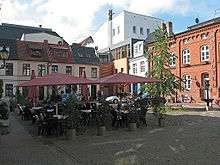
One of the most picturesque places in Rostock is the Neuer Markt (New Market Square), with the Town Hall - that was originally built in the 13th century in Brick Gothic style, but extensively transformed in the 18th century, with the addition of a Baroque façade and a banqueting hall. The square also preserved six original, carefully restored gable houses from the 15th and 16th centuries. The other historical houses in Hanseatic style that once bordered the square were destroyed in an Allied air-raid in 1942, and rebuilt in a simplified manner.[10]
The 15th-century Kerkhofhaus (at Große Wasserstraße, behind the Town Hall) is considered the best preserved brick Gothic house in Rostock.
St. Mary's Church Marienkirche, on Ziegenmarkt, is an imposing Brick Gothic church. Built in the 13th century, it was enlarged and modified at the end of the 14th century into the present cross-shaped basilica. The huge tower was not completed until the end of the 18th century. Inside there is an astronomical clock built in 1472 by Hans Düringer.

The main pedestrian precinct is Kröpeliner Straße, that runs east from the Neuer Markt to the 14th-century Kröpeliner Tor, a former town gate. The main buildings of Rostock University lie at Universitätsplatz, near the middle of the street, in front of the lively fountain of zest for life (Brunnen der Lebensfreude).
The Kloster St Katharinen (Convent of St. Catherine), an old Franciscan monastery founded in 1243, and extended several times during the 14th and 15th centuries. Now used as the seat of the Academy of Music and Theatre (HMT-Rostock).
The Brick Gothic Nikolaikirche (St. Nicholas Church), which is the oldest church in Rostock, built in mid-13th century. Heavily damaged during World War II and subsequently restored, the building is now used as an exhibition centre and concert hall, due to its outstanding acoustics.
Some parts of the medieval city wall, with four city gates, have survived to the present day.
Warnemünde

Warnemünde is the seaside part of Rostock and a major attraction of the city. Locals and tourists alike enjoy the maritime flair of old houses, a large beach, a lighthouse and the old fisherman port.
Economy
The economy is mainly characterized by maritime industries (especially shipbuilding), high-tech industries (IT, biotechnology/life sciences, medical engineering), the University of Rostock, tourism and the service sector. Major companies include:
- Maritime Industry
- Caterpillar Inc., manufacturer of diesel engines for ships
- Deutsche Seereederei Rostock, transport, cruises, property and tourism holding
- F. Laeisz
- Neptun Werft, shipyard belonging to Meyer Neptun Group
- Nordic Yards Warnemünde, shipyard
- Schiffselektronik Rostock
- Tamsen Maritim shipyard
- Other engineering
- Nordex SE, a major producer of wind turbines
- Suzlon, world's 5th largest wind turbine manufacturer
- Liebherr, manufacturer of cranes
- Tourism industry
- AIDA Cruises, German company for cruises
- Scandlines, German-Danish ferry operator (by Scandferries Holding)
- Others
- Hanseatische Brauerei Rostock, German brewery belonging to the Oetker-Gruppe
- IKEA
- Rostock University Hospital (Universitätsmedizin)
- Yara International, supplier of plant nutrients
Education
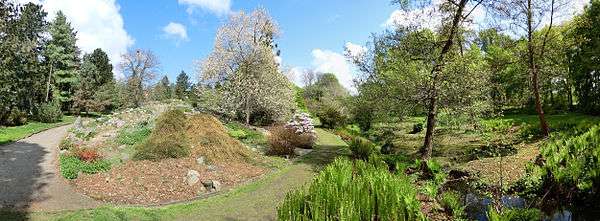
Rostock is home to one of the oldest universities in the world. Founded in 1419, the University of Rostock is the third oldest university in Germany in continuous operation, and one of the oldest universities of the world. It also maintains a botanical garden, the Botanischer Garten Universität Rostock.
The Academy of Music and Theatre (Hochschule für Musik und Theater) offers graduate degrees in artistic fields. Founded in 1994, the institution combined Ernst Busch, the former drama school, and the outpost school of the Hanns Eisler Music School Berlin. Today, the combined school is a member of the Association of Baltic Academies of Music (ABAM), a union of 17 music conservatories at the Baltic Sea and Israel. Unique in Europe is the postgraduate degree in piano duo performance. The school possesses a large opera stage (Katharinensaal) and two chamber music halls. There are concerts every day throughout the year.
Rostock also hosts the Max Planck Institute for Demographic Research and the Leibniz Institute for Catalysis, as well as two branches of Fraunhofer Institutes, one for Computer Graphics and one for Large Structures in Production Technology.
Culture
Events
The city is home to the annual Hanse Sail festival, during which many large sailing ships and museum vessels are brought out to sea, drawing over 1.5 million visitors.
An annual jazz festival, Ostsee-Jazz ("Baltic Sea Jazz"), takes place in June.
Cinemas
The Lichtspieltheater Wundervoll is the art house cinema of Rostock. It opened in 1993 and offers a daily programme in two venues, the Metropol and the Frieda 23 with three cinemas. At Frieda 23 is the Institut für neue Medien (IFNM), Rostock's Institute for New Media, which includes a media workshop. Both Liwu and IFNM are active members of the Landesverband Filmkommunikation Mecklenburg-Vorpommern. Special screenings for schools, educational programmes and special programmes are offered as well. It is the central venue for Rostock's Film Festival, the Festival im Stadthafen (FISH), the German Federal Festival for Young German Film.
Museums and Zoo
- Rostock Art Gallery (Kunsthalle Rostock)
- Museum of Cultural History (Kulturhistorisches Museum)
- Stasi Museum (Dokumentations- und Gedenkstätte der Bundesbeauftragten für die Unterlagen des Staatssicherheitsdienstes der ehemaligen Deutschen Demokratischen Republik)
- Warnemünde Local History Museum (Heimatmuseum Warnemünde)
- Shipbuilding and Shipping Museum (Schiffbau- und Schifffahrtsmuseum)
- Rostock Zoo
- Walter Kempowski Archive
Sport
| Club | Sport | Founded | League | Venue | Head Coach | Website |
|---|---|---|---|---|---|---|
| F.C. Hansa Rostock | Football | 1965 | 3. Bundesliga | Ostseestadion | Christian Brand | |
| Rostocker FC 1895 | Football | 1895 | Verbandsliga Mecklenburg-Vorpommern | Sportpark am Damerower Weg | Jan Kistenmacher | |
| HC Empor Rostock | Team handball | 1946 | 2. Bundesliga | Rostocker Stadthalle | Maik Handschke | |
| SV Warnemünde | Volleyball | 1990 | 3rd league (men and women team) | Sporthalle Gerüstbauerring | ||
| Piranhas Rostock | Ice hockey | 1953 | Oberliga (3rd division) | Eishalle Rostock | Henry Thom | |
| EBC Rostock Seawolves | Basketball | 1994 | Regionalliga Nord (3rd league) | OSPA-Arena | Sebastian Wild | |
| Rostocker Nasenbären | Skater hockey | 2005 | Inline-Skaterhockey-Bundesliga (1st league) | OSPA-Arena | Dimitri Kramarenko[11] | |
| HSG Warnemünde | Water polo | 1971 | Oberliga SH-MV (3rd league) | Neptun-Schwimmhalle |
Transport
Car
Rostock can be reached by motorway (Autobahn) A 1 from Hamburg via Lübeck on A 20 and by A 19 from Berlin and A 20 from Stettin in Poland.
Public transport
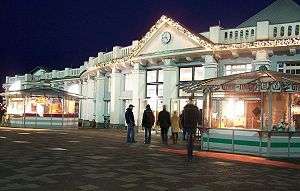

Rostock Hauptbahnhof offers fast rail connections to Hamburg and Berlin and from there to almost any other European city.
Within the city the Rostock tramway network is available, along with a wide network of buses and ferries. The first privately financed tunnel in Germany crosses the Warnow river and thus connects the eastern part of Rostock with the western part.
Ferry/ship
Rostock is Germany's largest Baltic port. Rostock is also home to a large ferry port. It is a main base for ferry operators Scandlines and TT-Line, which both connect Rostock with major Scandinavian destinations. Furthermore, Rostock receives the highest number of cruise tourists in Germany every year.
Ferries leave for
- Helsinki, Finland
- Gedser, Denmark
- Trelleborg, Sweden
-

Rostock harbour at sunset
-

The cruise ship A'Rosa Blu leaving Rostock in summer 2003
Plane
The Rostock–Laage Airport offers connections to major German and international destinations; regular flights to e.g. Munich are offered. The nearest larger international airports are in Hamburg and Berlin. There are also a number of airfields for smaller aircraft, such as Purkshof.
Notable people
This is a list of notable people who were born or lived in the city of Rostock:
- Gebhard Leberecht von Blücher, Prussian Generalfeldmarschall
- Johann Georg Noel Dragendorff (1836–1898), chemist
- Joachim Gauck, (born 1940), president of Germany since 18 March 2012
- André Greipel, (born 1982), cyclist
- Ernst Heinkel, (1888–1958), aviation pioneer
- Walter Hallstein, (1901–1982), politician (see Hallstein Doctrine)
- Britta Kamrau, (born 1979), long-distance swimmer
- Walter Kempowski, (1929–2007), writer
- Franziska Knuppe, (born 1974), fashion model
- Albrecht Kossel, (1853–1927), recipient of 1910 Nobel Prize in physiology/medicine
- Paul Martens, (born 1983), cyclist
- Marteria (Marten Laciny), (born 1982), rap singer/artist
- Gustav Mie, (1868–1957), physicist
- Hans von Ohain, (1911–1998), physicist and engineer, constructor of the first operational jet engine
- Rudolph Sohm, (1941–1917), lawyer and Church historian
- Jan Ullrich, (born 1973), cyclist, winner of Tour de France 1997
- Paul Walden, (1863–1957), scientist
- Paul Wallat, (1879–1964), painter and sculptor
References
- ↑ "Bevölkerungsstand der Kreise, Ämter und Gemeinden in Mecklenburg-Vorpommern 31.12.2015". Statistisches Amt Mecklenburg-Vorpommern (in German). July 2016.
- ↑ "Partnerstädte" (in German). Hansestadt Rostock. Retrieved 2015-02-16.
- ↑ "Kontakty partnerskie Miasta Szczecin". Urząd Miasta Szczecin (in Polish). Archived from the original on 2012-08-18. Retrieved 2013-07-29.
- ↑ "Dunkirk International" (in French). Archived from the original on 8 March 2015. Retrieved December 17, 2007.
- ↑ "Twin cities of Riga". Riga City Council. Archived from the original on 2008-12-04. Retrieved 2009-07-27.
- ↑ Frohmader, Andrea. "Bremen - Referat 32 Städtepartnerschaften / Internationale Beziehungen" [Bremen - Unit 32 Twinning / International Relations]. Das Rathaus Bremen Senatskanzlei [Bremen City Hall - Senate Chancellery] (in German). Retrieved 2013-08-09.
- ↑ "Auszug - Vereinbarung einer Städtepartnerschaft zwischen der Hansestadt Rostock und der Gemeinde Guldborgsund/ Dänemark" (in German). Hansestadt Rostock. 14 May 2015. Archived from the original on 2015-04-05. Retrieved 2015-02-16.
- ↑ Regiopole Rostock (German)
- ↑ "Average Conditions Rostock, Germany". BBC Weather. Archived from the original on February 8, 2009. Retrieved December 21, 2009.
- ↑ Bomben auf Rostock; H.-W. Bohl, B. Keipke, k. Schröder; Konrad Reich Verlag 1995
- ↑ Rostocker Nasenbären website



